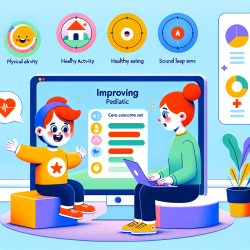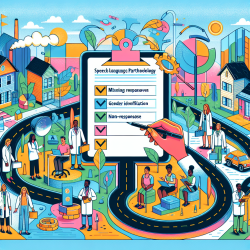As a practitioner committed to improving child health outcomes, staying updated with the latest research is crucial. A recent systematic review titled Identifying common health indicators from paediatric core outcome sets: a systematic review with narrative synthesis using the WHO International Classification of Functioning, Health and Disability offers valuable insights into common health indicators for children. This review, published in BMJ Paediatrics Open, emphasizes the need for a standardized approach to measuring child health and well-being across various clinical and non-clinical settings.
Core outcome sets (COS) provide a standardized set of outcomes that should be measured and reported in clinical trials for specific health conditions. The review analyzed 36 studies and identified 441 unique outcomes mapped to 22 clusters using the WHO International Classification of Functioning, Disability and Health (ICF). These clusters included medical diagnoses, pain, communication, social interaction, mobility, self-care, and school-related outcomes.
One of the key findings of the review is the significant overlap in health indicators across different core outcome sets, suggesting the potential for developing a universal framework for child health measurement. However, the review also highlighted a gap in the involvement of children, young people, and their families in the development of these core outcome sets. Only 36% of the reviewed studies included input from children and young people at any stage of the development process.
As practitioners, incorporating these common health indicators into your practice can help create a more holistic approach to child health. Here are some actionable steps based on the review's findings:
- Adopt a Holistic Measurement Framework: Incorporate common health indicators such as pain, communication, social interaction, mobility, and self-care into your assessments. This will provide a comprehensive view of a child's health and well-being.
- Engage Children and Families: Actively involve children, young people, and their families in the development and evaluation of health outcomes. Their perspectives are crucial in ensuring that the selected outcomes are relevant and meaningful.
- Utilize Data-Driven Decisions: Leverage data from core outcome sets to inform your clinical decisions. This will help in identifying areas that need intervention and tracking progress over time.
- Collaborate with Schools: Since school-related outcomes are a significant cluster, collaborate with educational institutions to monitor and support children's health and well-being in the school environment.
By implementing these strategies, you can enhance the quality of care provided to children and contribute to the development of a standardized approach to measuring child health outcomes. Encouraging further research and collaboration in this area will also help in refining and expanding the core outcome sets, making them more inclusive and representative of children's needs.
To read the original research paper, please follow this link: Identifying common health indicators from paediatric core outcome sets: a systematic review with narrative synthesis using the WHO International Classification of Functioning, Health and Disability.










